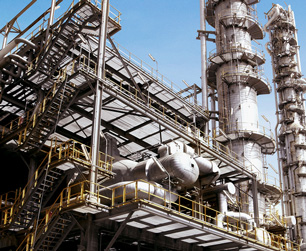Trichloroethanes (TCEs)
| EPA Maximum Contaminant Level (MCL) |
1,1,1-TCE | 0.2 mg/L |
| 1,1,2-TCE | 0.005 mg/L |

Trichloroethanes are organic chemicals (1,1,1-TCE and 1,1,2-TCE) used as cleaning solvents, degreasing agents and solvents for dyes, adhesives and coatings.
TCEs arrive in drinking water primarily through discharge from chemical and metal degreasing factories.
Health Effects of TCEs
The EPA warns of liver issues with both 1,1,1-TCE and 1,1,2-TCE, in addition to kidney, nervous, circulatory or immune system problems.
Some people who drink water containing 1,1,1-trichloroethane well in excess of the maximum contaminant level [0.2 milligrams per Liter] for many years could experience problems with their liver, nervous system, or circulatory system.
Some people who drink water containing 1,1,2-trichloroethane well in excess of the maximum contaminant level [0.005 milligrams per Liter] for many years could experience problems with their liver, kidneys, or immune systems.
Water Treatment for TCEs
For both 1,1,1-TCE and 1,1,2-TCE, the EPA recommends granular activated carbon (GAC) in combination with packed tower aeration (an air stripping technique.) Lenntech reports that activated carbon on its own has a “high probability” of removing 1,1,1-TCE, but only a “moderate probability” of removing 1,1,2-TCE.
Sources: EPA (1,1,1-TCE), EPA (1,1,2-TCE), WHO, Lenntech, Photo: WikiMedia, author: Secl
Site Index
Filtration Systems
- Aeration for Iron & Sulfide
- Backwashing Filters
(whole house & well units)
- Chlorine & Chemical Injectors
- Countertop Water Filters
- Garden Hose Filters
- Reverse Osmosis, Residential
- Reverse Osmosis, Commercial
- Shower Filters
- Specialty Filters
- Ultraviolet Systems
- Undersink Filters
- Water Softeners
- Whole House Filters
Cartridges
Parts
- Replacement Parts
- Faucets
- Filter Media
- Fittings
- Housings
- O-rings
- Pumps
- Pura UV
- R.O. Parts
- R.O. Tanks
- R.O. Booster Pump
- VIQUA UV